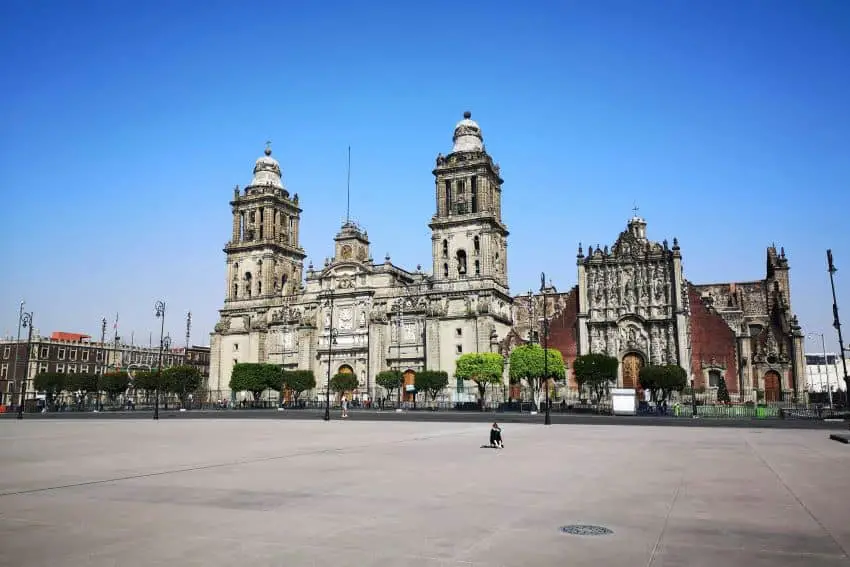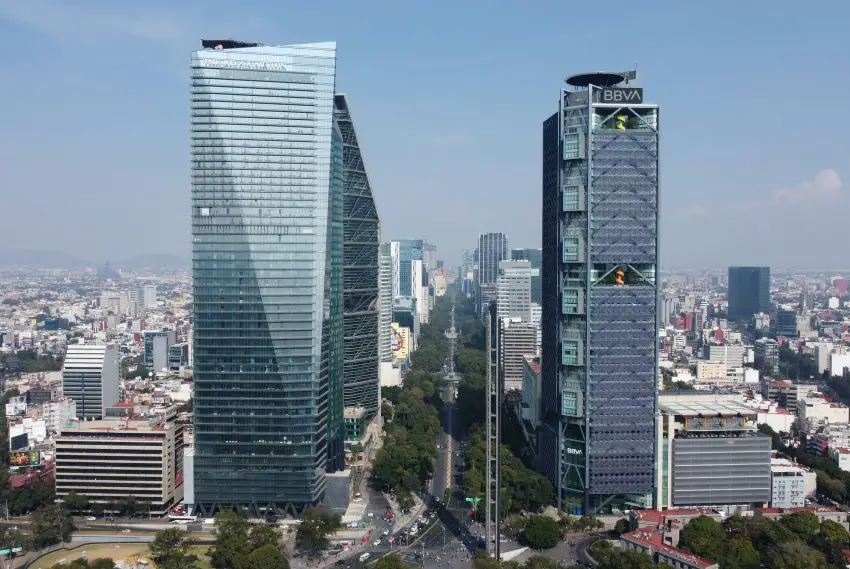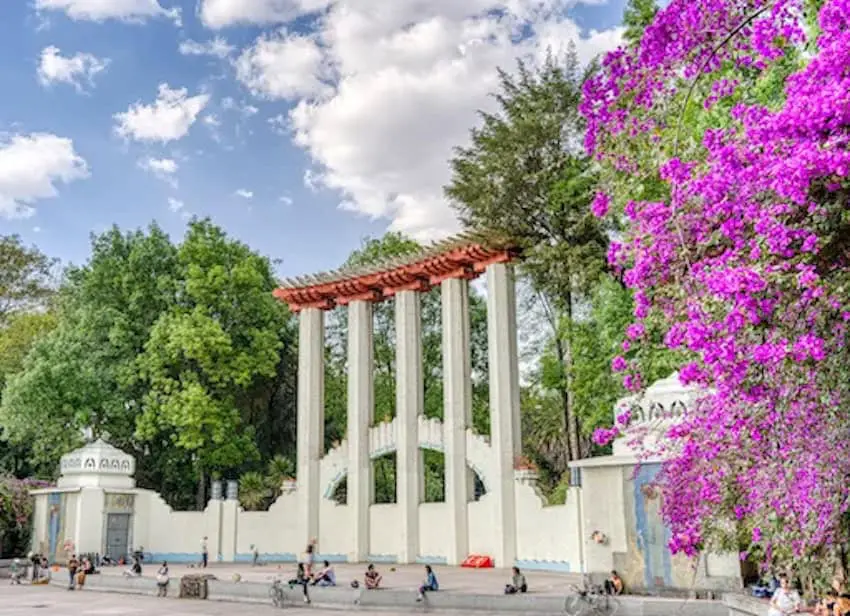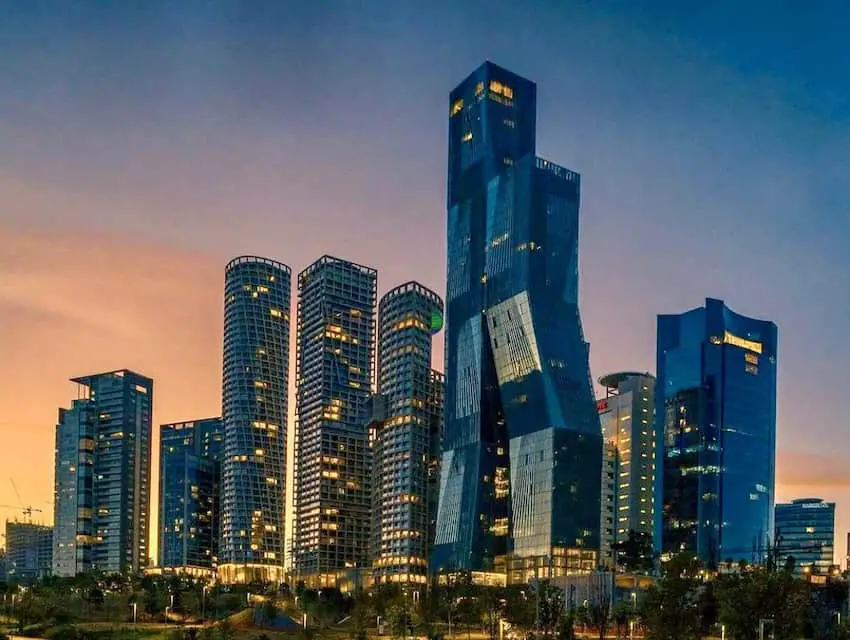This series has explored over two dozen locations for viable, sustained overseas living across a broad diversity of physical and cultural spaces. Saving for last the “Gran Manzana” of Latin America — Mexico City — was not by accident. As this series’ creator, I needed some reflection, writing about Mexico’s other potential living spots as prep to reflect on this week’s essay. Even with this buffer, should I write about a place that’s embraced and showered with praise for all its “culture” and “diversity”? Or should I fall into the “Gringo Go Home” narrative that foreigners (especially Americans) should just pack up and go back to their original Starbucks?
There’s also my hesitation to tell you about living in one of the most complex neighborhood landscapes in this hemisphere, when this publication has some fine local correspondents living daily lives in this pulsating mass of humanity.

As one of my favorite travel writers, Brit, Kate Simon puts it, “At one moment it’s a garbage heap, the next it’s the garden of Eden.” This sentiment certainly applied a generation ago, when Mexico City was presented to the world as a doomsday landscape of unregulated sprawl. It still is, but the 16 boroughs and over 1,800 neighborhoods are unquestionably better managed than before.
Before deciding to live here, you’ll need to honestly ask yourself the following questions:
Can you live and recreate at over 7,000 feet, some months with inversion layer smog? Can you embrace public transportation mobility and casually rub shoulders — and other body parts — with total strangers? Will you accept the flood of urban, external stimuli with a very low likelihood of finding fluent English speakers? Will your curiosity be enough motivation to get out of whatever comfortable colonia you settle into, and relish pockets of human expression across 3,000 square kilometers of sprawl? That is, of course, before the risk of a serious earthquake — the most recent serious event was in 2017 and evacuation alarms remain a common occurrence.
If you live in Mexico and hope to ever claim you “know” your adopted nation, you really must spend some time here. Sadly, most foreigners and nearly all of my lakeside expat friends and acquaintances have not made the effort. I suspect this applies to my coast-hugging fellow countrymen and women who are living a “real” Mexico existence without feeling the need to get acquainted with the city that’s the economic, cultural, political, and “everything Mexico” touchstone. And it takes more than an escorted four-days seeing the old buildings, ruins and mercados or double-decker red bus “highlights” tour to imprint how CDMX is likely the most captivating urban space you’re likely to ever experience. That’s before we even begin to talk about the food.

Anyone who claims they don’t like this place has either made only a drive-by attempt, glancing from a distance or not been exposed to places and micro spaces that defy and compensate for the city’s glaring urban challenges, whether they be traffic, political protests, seasonally poor air quality, tarp settlements or citizen indifference to what’s crumbling around them. In each of the four areas targeted in our ratings there are utterly fascinating, often hidden, treasures of ingenuity and artistic exuberance.
Tell me you can walk the Centro Histórico and the Diego Rivera National Palace murals and not be in utter awe, or have a white linen late afternoon lunch at the San Angel Inn with a shrug, or wander the Museo de Arte Popular past Miguel Covarrubias’s monumental map of Mexico mural with indifference, or see the sunken stone baths used by Mexica royalty in Chapultepec Park and not surrender to the grandeur of this seven thousand foot high, volcano encircled, former lakebed that’s been witness to more history, triumph and tragedy than anywhere else on the continent.
The city’s districts are unlike anything most North Americans can even imagine. Mexico City housed three million residents as recently as the 1950’s, (22 million today in the metro area, almost one-fifth of all Mexicans), across a gigantic, flat valley floor, dotted with 16th century satellite “pueblos,” with dusty dirt roads connecting to the capital’s government buildings, colonial-era elite residences and a grid-like central city core. As the city spread, small towns were gobbled up and often obliterated. Yet some spaces survived, and as a result, the Mexico City of today feels more like a jamboree of competing small towns than a coherent city.
Condesa, Polanco and La Roma

What is there to say about the “Expat triangle” of western Mexico City that hasn’t already been said? Art, culture, parks, history, Michelin-star dining, architecture and probably the highest standard of living in all of Mexico is found here. There is easy access to the rest of the city, metro stops abound and Benito Juarez International Airport is close enough that even in bad traffic, you’ll make your flight.
San Ángel

The city’s southern area is where colonia life takes its deepest breath. It’s greener, at a slightly lower elevation, more residential, and further away from the city’s clogged center and industrial north. Places like San Ángel, Coyoacan, and Chimalistac are delightful, but hardly undiscovered.
San Ángel is a picturesque village that has somehow maintained the atmosphere of a remote mountain retreat. In colonial days it was an enclave for the city’s aristocrats. Its meandering cobblestone streets, thick-walled opulent mansion estates, small plazas and parks make San Ángel a pleasant respite from the city’s clamor. The lovely Plaza San Jacinto is a square that invites relaxation and contemplation, especially mid-week, sans the weekenders visiting for the famous Bazar del Sabado, Mexico City’s most beloved weekend “artsy” hang-out.
Coyoacán

Coyoacán lies about a mile east of San Angel and is also a throwback to Mexico City’s colonial days. Following the conquest, it nearly replaced Tenochtitlan as the site for the new capital. Coyoacán is larger and has a more bohemian, young intellectual beat. And of course, there is magnificent UNAM, a UNESCO World Heritage Site that’s a wonder to behold of early urban planning, striking architecture, murals, the Olympic and Azteca stadiums and green spaces.
Santa Fé

Modern Santa Fé, built on top of what was once a municipal dump, is the business hub of the 21st Century capital. Living here feels more like Singapore or Hong Kong than Mexico at times, with towering, modern blocks, replete with every amenity you could ask for, perfectly sculpted parks, and recently, modern transport connections to the city center. Despite this, it is still somewhat removed from the heart of the “real” Mexico City, and is devoid of much of the culture that makes the capital such a truly magical place. Traffic can be an absolute nightmare — a salient warning when you consider it can be up to 3 hours from the airport at peak rush hour.
All of this wonder and diversity comes with a disclaimer from our resident “colonia-ista,” Bethany Platanella: “If you plan to visit as many alcadías as possible, please do your due diligence before going! Areas like Iztapalapa, Xochimilco, Tlalpan, and parts of Cuauhtémoc are not safe and should be avoided, especially at night. We recommend taking a guided tour where possible.”
Finally, as if all this weren’t enough, Mexico City is an excellent base from which to explore the surrounding states of Hidalgo, Puebla, Mexico, Morelos and others. Within two hours by bus or car, urban inconveniences melt away as rural Central Mexico unfolds in a mosaic of colonial towns, little-visited ancient ruins, Spanish-inspired cities, alpine forests and lush semi-tropical valleys. So, for the urban-inclined, Mexico City can be the perfect place to “dig in,” while “getting out” offers a lifetime of “real Mexico” escapes.
The ratings
A full breakdown of our rating system can be found here.
![]()
What did we get right? What do you disagree with? Let us know in the comments.
Author Greg Custer lives in Mexico. He’s worked for over 40 years in international tourism, educating travel advisors around the world about Mexico and other Latin American destinations. He helps folks explore Mexico for living at www.mexicoforliving.com.
